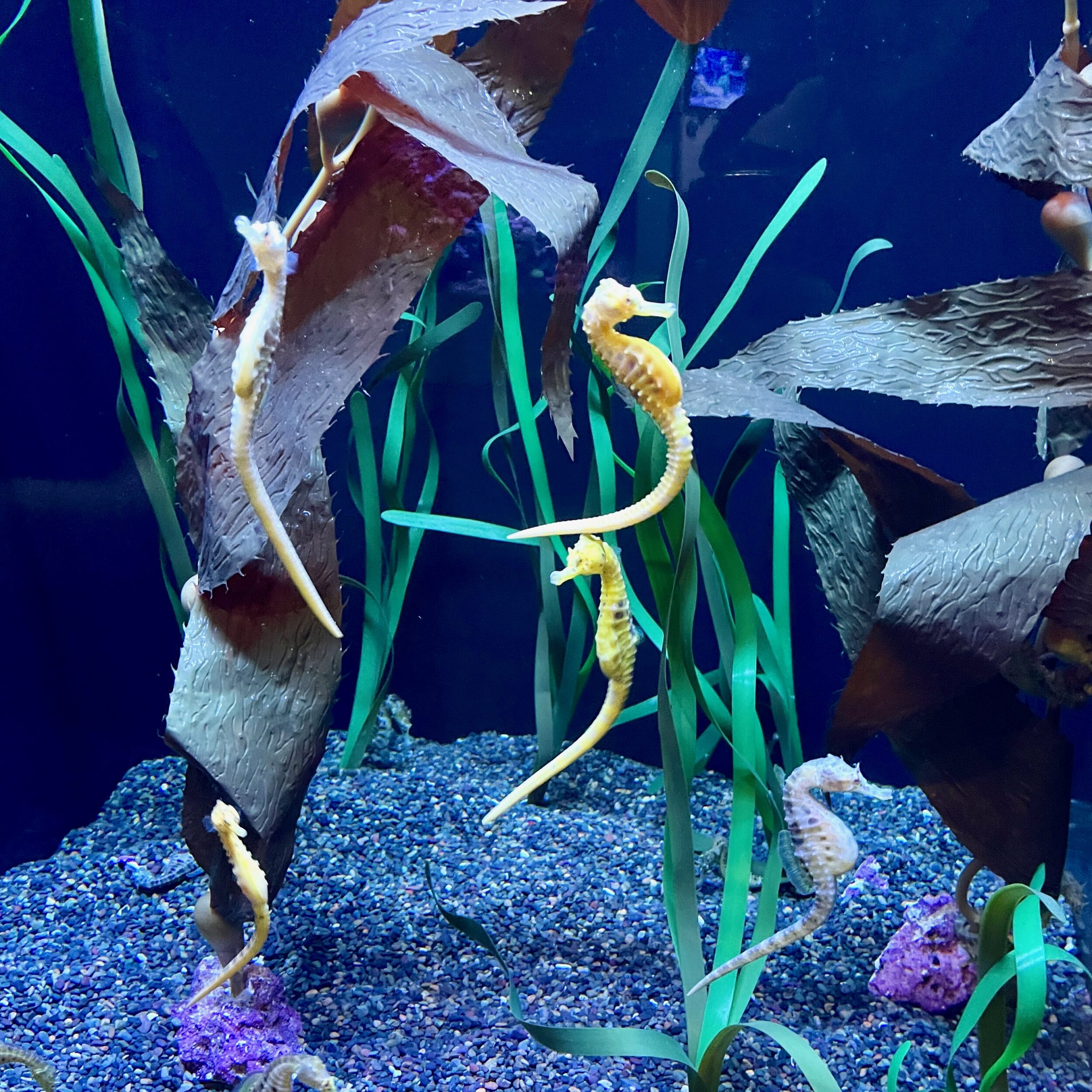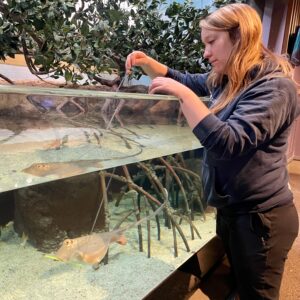
By GRETCHEN AMMERMAN/Oregon Coast TODAY
NEWPORT — Familiar sights on Oregon beaches, sea jellies that have been tossed unceremoniously onto the shore blend into the flotsam of seaweeds, sticks and shells. Ranging from the graceful Pacific sea nettles to the goofy blue blubbers that move as if late for a very important date, these living, albeit brainless, organisms positively flow with personality,
 So much so that Evonne Mochon Collura, who has been primarily working with sea jellies at the Oregon Coast Aquarium since 2006, is still enamored with them.
So much so that Evonne Mochon Collura, who has been primarily working with sea jellies at the Oregon Coast Aquarium since 2006, is still enamored with them.
“I started in 2004 as the coverage partner for a lot of the displays and animals,” she said. “When the main jelly person left, I called dibs. They still always keep me guessing and engaged.”

Collura helps maintain the new Sea Jelly gallery, part of two new exhibits unveiled at the aquarium Oct. 31. The gallery expanded on the aquarium’s existing jelly displays and created a morphable celebration of the species.
“We wanted the new gallery to be able to change so that if something amazing comes up we can display them,” Collura said. “We want to keep it fresh and fun.”
Senior aquarist Savannah Dodds also enjoys visiting the jellies.
“For something that doesn’t have a brain, they bring their own beauty to the world,” she said. “But sometimes they do something stupid, and I’m reminded, ‘Oh right, they don’t have a brain’.”
Dodds manages the other new exhibit, the reimagined Connected Coasts gallery. Formerly Coastal Waters, the new displays highlight diverse marine life found near and far from the Oregon Coast, and the conservation efforts that protect them. Connected Coasts houses iconic tropical species, including potbelly seahorses, lionfish and live corals.
“Our goal with the exhibit was to try to show people how Oregon water affects all parts of the Pacific Ocean,” Dodds said. “Our water is super nutritious and affects things far away from us as well. We really want people to understand that places like coral reefs and mangroves protect us and need a lot of help. We also wanted to show all the cute animals.”
Cute?
Dodds dropped the word early in our interview and I’ll be darned if, after gently teasing her for using the word for things like eels, sea stars and sea jellies, I didn’t end up using it during the tour of both new galleries. Take the eels in the sea mountains display, named Mirage, Stella and Ezra.
As we watched the animals bobbing and weaving through the rocks, almost disappearing except for the tiny bit of face peeking out coyly whenever I raised my camera. Undeniably cute, but especially if one doesn’t worry about gender assignment.
“We don’t actually know the sex of any of our eels,” Dodds said, “because the only way to find out is looking at their back teeth, which, I’m sure you can imagine, is not easy to do.”
Although many of the tanks include what look like corals, only one is true.
“Our coral tank with live corals is one of our jewels,” Dodds said. “We wanted to make sure we don’t harvest too much from any living coral reefs, and corals grow so slowly in the wild it would take about 500 years to grow enough for our displays, so we have fabricated corals for that reason.”

Life in the aquarium seems like a pretty good deal for some of its residents, especially for the very delicate-looking jellies.
“The nettles and moons in the wild only live about a year,” Dodds said. “They can get pushed into the harbor, washed up on the beach, etc. When you have a stable environment, they can live a lot longer.”
Longer indeed — in captivity, nettles can live up to five years, and moons up to 10.
The jelly gallery offers a long, wide bench on which to stop and take in the stunning displays.
“We wanted to give people a space to just sit and be with the jellies,” Collura said.
The jellies gallery also offers a tactile experience. At the center stands a sphere filled with moon jellies, water rippling over its surface and inviting visitors to feel the flow.
Moon jellies, named for the way they look, actually have been used in space travel, when thousands of them took a ride on a space shuttle in 1991 to learn how zero gravity might impact astronaut bone density. That is one of the interesting facts on the signs that fill both new galleries.
Access to the galleries is included with general admission.
- The Oregon Coast Aquarium is at 2820 S.E. Ferry Slip Road, Newport and is open daily from 10 a.m. to 5 p.m. Lincoln County residents can see all the aquarium’s exhibits for $5 per person every Sunday.
-
For more arts and entertainment news go to Oregon Coast TODAY



Comment Policy